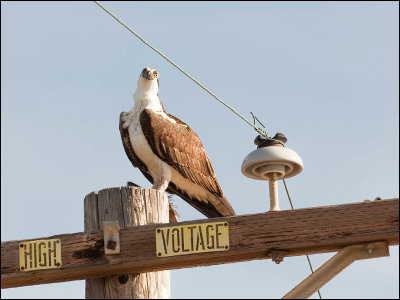'Hawk's eyes' aren't really amazing, are they true or false?

'Hawk's Eye Mihawk' that appears in the manga 'One Piece' is a character with superhuman strength, and the site ' Hawk's Eye ' that appears in the anime 'Ghost in the Shell' links with an artificial satellite to sniper. A high-performance artificial eye that supports it. Riza Hawkeye, who appears in 'Fullmetal Alchemist', is
However, looking at actual cases, it is often reported that birds hit obstacles and die while flying. I decided to see from the mechanism whether the bird's eyes are really good.
Bird Eyesight Not So Keen After All --Animal News: Animal Planet
'Bird Vision Mechanism' SOBIM: Vol. 31 (2007), No. 3 pp.143-149
◆ Can the colors be distinguished?
Professor Shoei Sugita of the Faculty of Agriculture, Utsunomiya University points out that birds are highly discriminating in color, citing the fact that many birds, such as kingfishers, mandarin ducks, and peacocks, have abundant feather colors and patterns. To do.
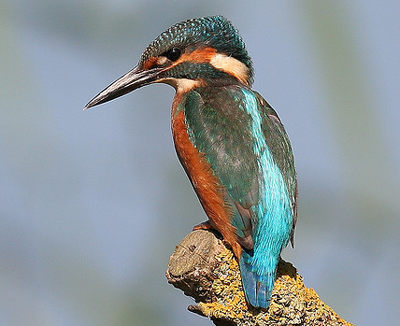
by
For example, chickens have one more type of visual pigment that absorbs light than humans. Humans make up their color vision with the three primary colors of red, blue, and green, but birds are thought to make up their color vision with the four primary colors of light. However, it is beyond imagination what color the bird looks like.
◆ Wide field of view
The range that can be seen without moving the eyeball is called the 'field of view', but the field of view of birds is generally wide. Pigeons with eyeballs on the side of their heads are 169 degrees in the field of view of one eye. With both eyes, the field of view that can be covered is 316 degrees. Furthermore, a bird called Woodcock has a field of view of 359 degrees with both eyes. By the way, humans are about 200 degrees with both eyes.
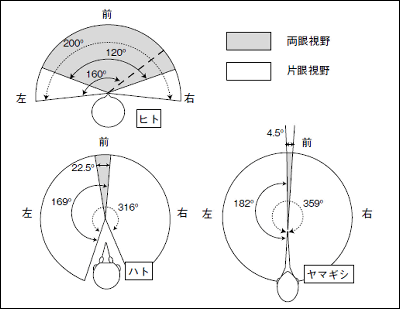
On the other hand, the range in which you can see an object with both eyes at the same time and capture it three-dimensionally is very narrow, 22 degrees for pigeons and 4.5 degrees for woodcock, compared to 120 degrees for humans. When a pigeon walks, it moves with its neck fixed, which is thought to stabilize the position of the eyeball and move while focusing on the object.
◆ The bird's eye is about the size of the brain
The bird's eyeball is about the size of a brain or larger. The image below shows the chicken brain and eyeballs. You can see that the eyeball is considerably larger.
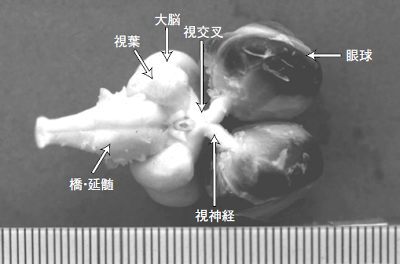
The ostrich has the largest eyeball among terrestrial animals and can see up to 3.5km far.
◆ A mechanism to freely capture both distant objects and nearby objects
The bird's eyeball has the same basic structure as mammals such as humans, but has unique functions. For example, the crystalline lens, which acts as a lens in the eyeball, is softer in birds than in mammals. Birds transform this soft crystalline lens by a mechanism that does not exist in humans, such as 'Crumpton's muscle' and 'Bryuk's muscle', and by protruding the lens when looking at nearby objects, the focus can be adjusted freely. I can do it.
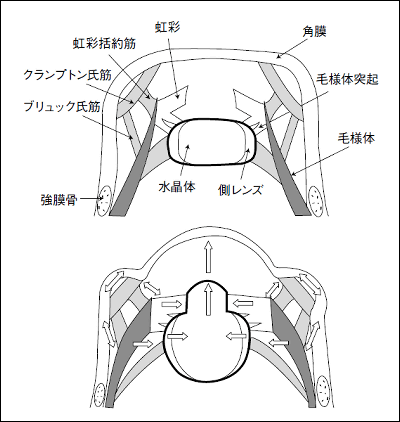
In the case of mammals such as humans, only the crystalline lens has the function as a lens that adjusts the focus and forms an image, but birds can change the curvature of the cornea, and the cornea also has a lens function. I am. By having a flexible crystalline lens and cornea in this way, it is possible to make more advanced lens adjustments, and it is possible to freely visually capture distant or near objects.
◆ Why do you hit an obstacle?
In the past, GIGAZINE also published an article 'Why do birds hit obstacles in front of me?'
Professor Graham Martin of the University of Birmingham said, 'When a bird flies in the sky, if you turn your head down to look under your eyes, use both eyes to look in that direction, or use only one side of your field of view. It's possible that these behaviors are species-derived, but in any case, you're temporarily not looking in the direction of travel. '
Although it is a bird with a wide field of view and advanced focus adjustment ability, it is often looking downward during flight and not looking in the direction of travel, and it may collide with structures such as skyscrapers. matter. Also, while bird vision is good at capturing moving matter, it does not seem to be suitable for reading detailed situations in space.
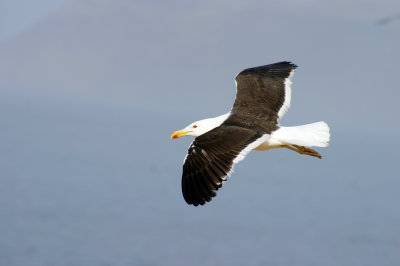
Returning to the characters mentioned at the beginning, their skills are derived from 'Unome Takanome'. This is how cormorants and hawks are eagerly searching for prey. In other words, rather than being used to mean 'good eyes' or 'great visual ability,' it means 'hunting prey like a hawk.'
Related Posts:
in Creature, Posted by darkhorse_log



